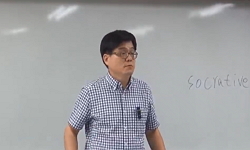The purpose of this study was to examine the patterns and causes of vocabulary replacement errors in speaking among intermediate level Korean learners and propose learner-centric teaching plans. The investigator reviewed previous studies on vocabulary...
http://chineseinput.net/에서 pinyin(병음)방식으로 중국어를 변환할 수 있습니다.
변환된 중국어를 복사하여 사용하시면 됩니다.
- 中文 을 입력하시려면 zhongwen을 입력하시고 space를누르시면됩니다.
- 北京 을 입력하시려면 beijing을 입력하시고 space를 누르시면 됩니다.

한국어 중급학습자의 말하기에서 나타나는 어휘 대치 오류에 대하여 = A Study on Vocabulary Replacement Errors in Speaking among Intermediate Level Korean Learners
한글로보기https://www.riss.kr/link?id=A105432455
- 저자
- 발행기관
- 학술지명
- 권호사항
-
발행연도
2018
-
작성언어
-
- 주제어
-
KDC
700
-
등재정보
KCI등재
-
자료형태
학술저널
-
수록면
49-78(30쪽)
- DOI식별코드
- 제공처
-
0
상세조회 -
0
다운로드
부가정보
다국어 초록 (Multilingual Abstract)
The purpose of this study was to examine the patterns and causes of vocabulary replacement errors in speaking among intermediate level Korean learners and propose learner-centric teaching plans. The investigator reviewed previous studies on vocabulary errors and found that the research effort was not relatively sufficient and multilateral in speaking compared to writing. The present study, thus, analyzed the recorded data of transcribed speaking tests, examined the overall patterns of errors, and categorized the causes of vocabulary errors by the type based on the criteria and frameworks of error analysis. Vocabulary replacement errors were divided into two categories: errors derived from a lack of understanding of the target language and errors due to the influence of mother tongue. The investigator further categorized the former into errors due to lexical grammar elements, errors due to similarity in pronunciation and form, and errors due to similar meanings and examined these characteristics in detail. The findings led to a conclusion that vocabulary learning should be accompanied by syntactic features and that teachers should recognize high frequency pronunciation errors of the language group and instruct their students to practice them thoroughly. There was also a need to offer a lot of examples so that the students could accurately see the difference in meaning. Errors due to the influence of mother tongue were further divided into errors due to mother tongue-style expressions and code changes to analyze their causes. It would be desirable for learners to refrain from their mother tongue-style expressions and code changes they used habitually. The present study holds its significance in that it classified specifically the patterns and causes of errors in speaking and examined their characteristics; thus, proposing plans for the reduction of errors and effective vocabulary instruction.
동일학술지(권/호) 다른 논문
-
동사 파생접미사 ‘-대다’에 대하여 - 규칙적 어근과 결합하는 ‘-대다’를 중심으로 -
- 배달말학회
- 박은경 ( Park Eun-kyeong )
- 2018
- KCI등재
-
- 배달말학회
- 양지현 ( Yang Ji-hyeon )
- 2018
- KCI등재
-
설명문과 논설문 쓰기에서 문단 구현 양상 조사 연구 - 대학교 신입생의 글쓰기를 대상으로 -
- 배달말학회
- 서종훈 ( Suh Jong-hoon )
- 2018
- KCI등재
-
- 배달말학회
- 변종현 ( Byun Jong-hyun )
- 2018
- KCI등재




 KCI
KCI KISS
KISS






